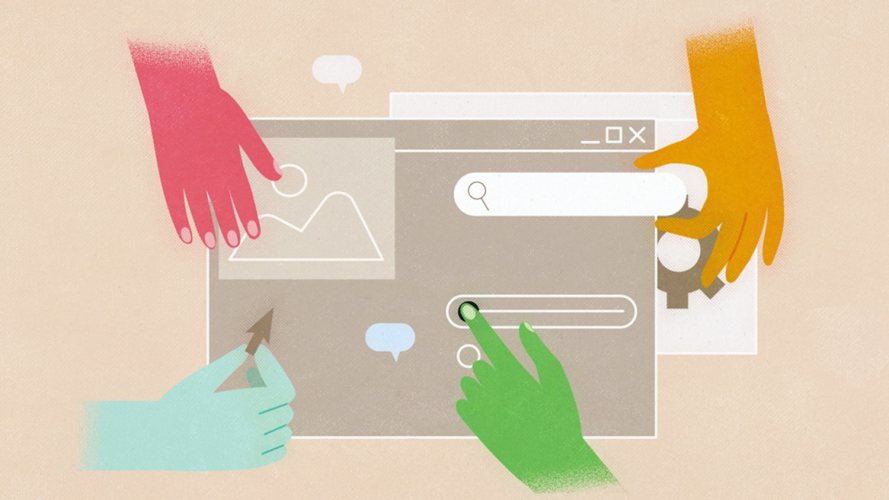After hiring boomed in the first quarter, companies are now assessing their talent needs. One field that is expected to continue growing faster than average in the next decade includes the user experience (UX) designer. Could hiring for this role support your business?
A UX hire can help avoid design debt, strengthen customer relationships, and build customer trust and long-term brand loyalty.
They do this by advocating for the user and solving users’ pain points. It’s one reason why design-driven companies are incredibly effective. According to a McKinsey research report, they outpace industry-benchmark growth and increase revenues faster than industry counterparts over a five-year period.
Knowing this, it’s possible that a UX Designer could be your team’s missing piece. However, some executives and hiring managers may not think they need a UX Designer. That might be because they imagine designers work mainly in visual arts, or their skills aren’t applicable to a customer relationship management (CRM) platform. Alternately, it can feel more efficient to have another role pick up any design work. These are all common misconceptions.
Let’s address the top questions that lead to confusion:
1. Do I need to hire a UX Designer if my business uses a customizable platform?
Yes, you do. UX Designers bridge the gap between resources and development. It’s like builders getting a set of Legos or like construction workers getting blueprints and materials. There are better results when a dedicated designer is tasked with this challenge and leads with a design-minded approach.
“Put simply: Salesforce provides pre-assembled platform building blocks supported by Salesforce Lightning Design System (SLDS). However, great design requires having a solid design team to help decide what should be built, customized, or configured; and to ensure the experience is delightful,” said Cynthia Kaschub, Salesforce design research architect.
Usually, when you have the technology, there’s an investment being directed to building development teams. That’s also the perfect opportunity to build a design team that knows what the platform can do. Instead of borrowing in-house design talent who may be less familiar with the tech, a UX Designer hits the ground running. For example, a Salesforce UX Designer knows the ins and outs of the Salesforce platform.
Now, let’s get specific on what that looks like.
2. What does a UX Designer do on a technology platform?
In short, they design solutions using the technology platform as a canvas and, in the case of Salesforce, use SLDS as paint. Their work focuses on creative problem solving at every step of the user experience. And they don’t do it on their own. Designers partner with roles across the organization (e.g. developers, architects, content creators, and admins) who build, integrate, and customize platform features used by business users (e.g. sales, marketing, service agents).
Sometimes this looks like a designer running user research or creating visual artifacts in service to experiences on the Salesforce platform. Other times it means a designer aligning strategic direction with business needs.
To do this, they tap a range of skills.
3. What type of skills does a UX Designer need, and can another team member fill that role instead?
While we advocate for all roles to skill up on design and advocate for good design, the most effective move is to hire a dedicated UX Designer.
This allows one role to focus on a primary job without overextending or multitasking, which can create quality and timing issues. However, some businesses have been hesitant to invest in design. The McKinsey report explains this: “With no clear way to link design to business health, senior leaders are often reluctant to divert scarce resources to design functions. That is problematic because many of the key drivers of the strong and consistent design environment, identified in our research, call for company-level decisions and investments.”
Advocating for good design is a “yes, and …” mindset. Yes, all roles can skill up on design — and also support designers who choose a focused career pathway. Doing both elevates design as a business tool. It’s one of the most incredible assets companies have when building and deploying human-centered experiences on a technology platform. The concept of targeted universalism supports this. It’s a means of setting universal goals and using targeted processes to achieve those goals.
“Whether specifically called out or not [in the research], successful design was always in service to the humans using the systems — making it easier, more beautiful, more efficient, and delightful. Design is an outcome, and it’s also a process,” said Joel Fariss, researcher, Halibut Flats R&D. “With more design skills and knowledge across the ecosystem, the outcomes will get better.” Salesforce believes in the transformative power of design as a way to solve problems of all sizes and scales.
That’s why we began certifying UX Designers last year.
They complete a rigorous study guide and proctored exam in order to be the effective design leaders every organization needs. With these questions clarified, I’ll pose a question for you: how will you support design and investments in design talent with your team?
Can you be an advocate for design?
Learn about user experience basics on Trailhead.
Hire a UX Designer
When you’re ready to bring a Salesforce-specific UX Designer onto your team, source new talent through Salesforce Talent Alliance.n































